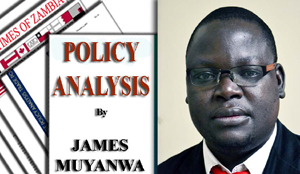 THE direct and obvious result of the proposed changes to the Mineral Royalty Tax regime is the K2.3 billion annual loss of revenue, but there are other importations, positive and negative ones.
THE direct and obvious result of the proposed changes to the Mineral Royalty Tax regime is the K2.3 billion annual loss of revenue, but there are other importations, positive and negative ones.
It should be understood that these changes will remain proposals until Parliament approves them because the original revision, which brought the contentious charges, is still law having been duly passed by Parliament.
This was done well before the new tax regime took effect on January 1, 2015.?Before I can go into details about some effects of, the lessons drawn from and best way forward on the changes, I first want to look at the changes themselves in their right perspective.
Under the 2015 national Budget, Finance Minister Alexander Chikwanda had proposed the increase of the Mineral Royalty Tax from six per cent to eight per cent for underground mining and to 20 per cent for open-cast mining.
The eight per cent Mineral Royalty Tax for underground mining operations and the 20 per cent one for open cast mining operations were the final taxes.
These proposals, which were subsequently adopted by Parliament, replaced the then two-tier system.
The measures were intended to increase Government income from the sector.
It was also aimed at increasing transparency in the sector and achieving a more equitable distribution of the mineral wealth between the Government and the mining companies.
According to a Zambia Institute for Policy Analysis and Research (ZIPAR) commentary on the matter, taxes on the value of production, rather than profits, are cheaper and easier to administer.
This is because they are charged on the gross value of copper extracted, measured using London Metal Exchange prices.
It is relatively straightforward to monitor how much copper is taken out of the ground.?In contrast, ZIPAR observes, the declared profits are relatively easily manipulated.
It says that some mining firms operating in Zambia have long been suspected of engaging in tax avoidance vis-à-vis corporate income tax.
This could be through overstating their expenses, understating revenues or declaring some expenditure as capital allowance.
ZIPAR argues that what happened with the 2013 national Budget points to the difficulties with raising money through taxes on profits.
In 2013, the Government expected to raise K2.7 billion from corporate income tax, but collected less than half of the amount – K1.1 billion.
In contrast the Ministry of Finance raised 90 per cent of what it had projected from royalties – K1.8 billion compared with a projected K1.9 billion.
According to ZIPAR that, taken together with reports of boasts about profits made in Zambia by investors in some quarters of the mining sector, made Government’s thinking understandable.
But obviously what had followed the new taxes, in terms of the reactions from the mining houses is almost history.
The mining houses, through the Zambia Chamber of Mines (ZCM), said Zambia already had the highest base metal tax regime in the world – almost double that of Chile.
ZCM had projected that in 2015 alone, as a direct result of the introduction of the 2015 Budget, mine suspensions and the postponement of major capital projects would have led to over 12,000 direct job losses.
The ZCM analysis had estimated that production losses in 2015 would exceed 158,000 tonnes of copper while over the next five years lost production would have exceeded 1,100,000 tonnes.
Zambia stood to lose more than $1 billion of export earnings in 2015.??Others echoed similar sentiments.
For instance, Barrick Gold Corporation announced plans to initiate procedures to suspend its operations at Lumwana Copper Mine, to the threat of 4,000 jobs.
The scenario was compounded by the reduction in the prices of copper on the international market from the government projection of $6,780 per tonne to $5,665.?Production, which was also assumed, would remain at a peak of 959,696 tonnes dropped to 839,000 tonnes.
Therefore, the changes to the 2015 mining tax regime were inevitable.?It was just a question of when and to what extent!
The measures that the government has now approved include the uniform mineral royalty of nine per cent from 20 per cent for open-cast mining and from eight per cent for underground.
The corporate income tax on income earned from mining operations, which had been removed, will now be 30 per cent and another 35 per cent corporate income tax on income earned from mineral processing.
There will be further 15 per cent for variable profit tax on income earned from mining operations when taxable income exceeds eight per cent of the gross sales and deduction of tax losses carried forward will be limited to 50 per cent of taxable profits.
The Government says, once the relevant Bill has been approved by Parliament, the effective implementation date will be July 1 2015 so that there is a logical sequencing in the merging of two tax regimes in one fiscal year.
Look out for part two of the article on some effects of the changes, the lessons drawn from them and the best way forward, next week.?For comments call: 260 0955 431442, 0977 246099 or email: jmuyanwa@gmail.com.






